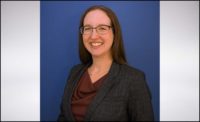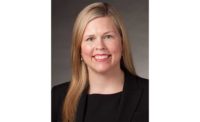Name: Stephanie Taylor, M.D., M. Arch
Age: 62
Educational Experience: Medical degree, Harvard Medical School, 1984; and master’s in architecture from Norwich University, 2007.
Professional Credentials/Accreditations: M.D., master’s in architecture; fellow of the Board of Art and Architecture, Norwich University; Chartered Association of Building Engineers (U.K.), and Royal Society of Public Health (U.K.).
Organizational Affiliations/Achievements/Awards: Alpha Omega Alpha, Harvard Medical Schooll graduated Cum Laude, Harvard Medical School; graduated Cum Laude, Norwich University; ASHRAE Distinguished Lecturer; Harvard Medical School Incite Health fellow; Soma Weiss Research Award; Association for Healthcare Executives; published in Nature, Science, American Journal of Physics, and in peer-reviewed medical journals; monthly columnist for Engineered Systems magazine; and CEO of Taylor Healthcare Consulting Inc.
When did you fall in love with engineering?
In ninth grade, while attending an all-girls boarding school, I would sneak out of my dormitory at night to rebuild the engine of an old Studebaker car in a nearby barn.
What has been the most rewarding aspect of working in the skilled trades?
The most rewarding aspect of working in the skilled trades is being able to see tangible results of my work. Also, I enjoy managing indoor air quality using physics, biology, and design tools to optimize occupant health.
What challenges do women face in this profession? Why aren’t there more women in engineering?
From their early years in school, girls are not adequately supported in high-level mathematics and science courses. Furthermore, girls generally are not encouraged to take apart electrical, mechanical, or automotive devices, so they do not develop their interest and confidence in understanding how intricate devices work.
Describe what your job entails on a day-to-day basis.
I spend my days researching the relationship between building design, indoor air quality, the movement of microbes in buildings, and occupant health. I also travel quite a bit, speaking to ASHRAE chapters and to hospital leaders about the importance of IAQ on human health and patient outcomes.
What drives/motivates you every day?
I love researching, understanding, and educating others about the tremendous impact of the indoor built environment on human health. This is so obvious, yet very under investigated. I believe that using occupant health data as a building-performance metric will be the most important next advance in improving public health.
Describe the proudest moment in your career.
Receiving this award!
What remains on your engineering bucket list — what do you aspire to do that you haven’t done yet?
I hope to start a foundation similar to LEED, but one that rates buildings on their use of occupant health, productivity, and learning as a building performance metric. This would be like having a human health meter as well as an energy meter.”
What’s one thing no one knows about you?
My washing machine and dryer are from 1985, and I love to fix them (when needed) with parts from old appliances at our local dump.
List any mentors who’ve helped you succeed and describe exactly how they’ve shaped your success.
Howard McKew, P.E., made me believe that I could successfully run a company and gave me the support, guidance, and tools to do so. I would not be where I am today if not for him.
What does the future hold for you?
Several more decades of work that relates indoor air quality to human health.
What advice do you have for prospective female engineers considering entering the field?
Engineering work is tons of fun, rewarding and has tangible results. In addition, while engineers are a bit shy, they are smart, thoughtful and have an excellent sense of humor. In short, they are wonderful colleagues.




